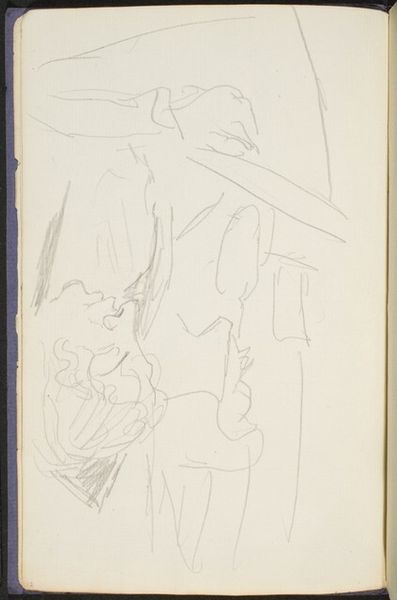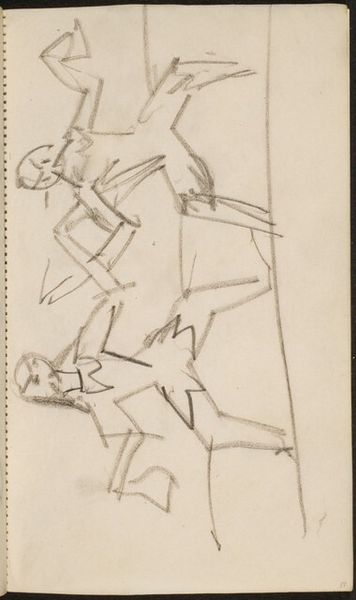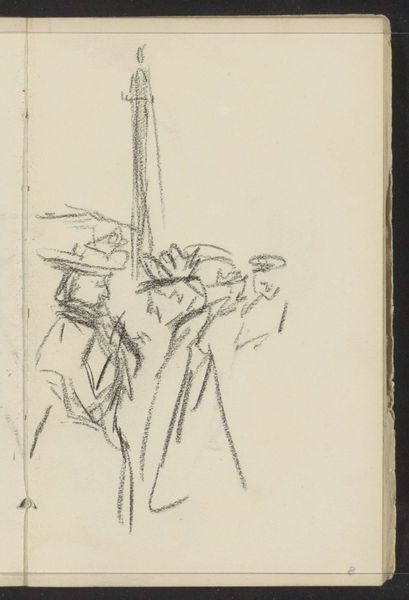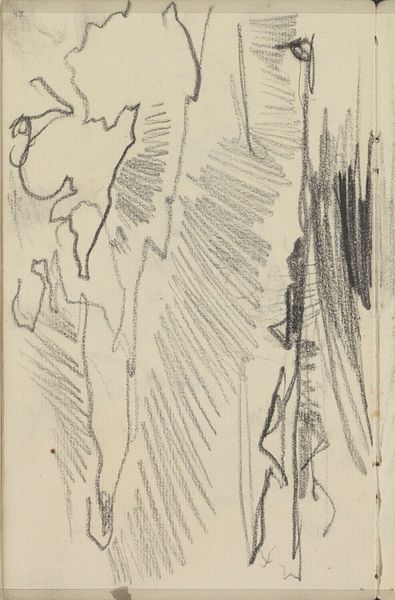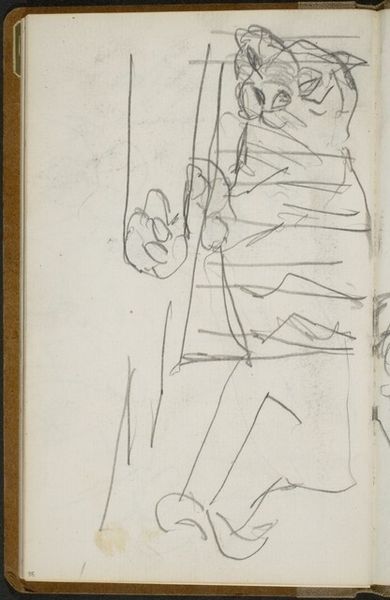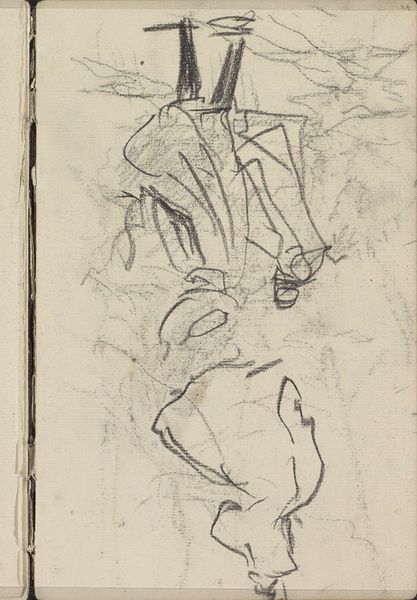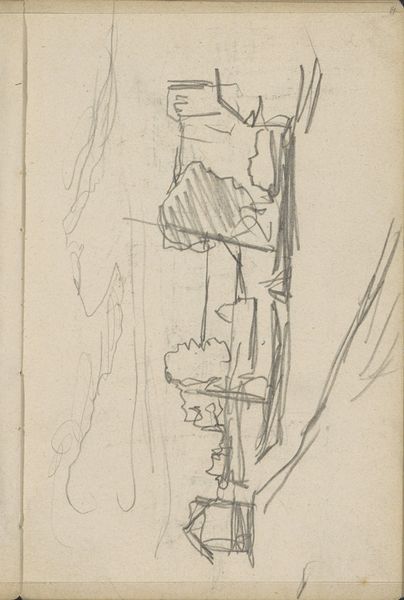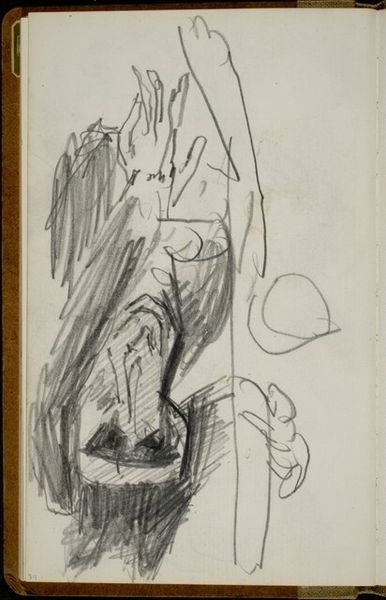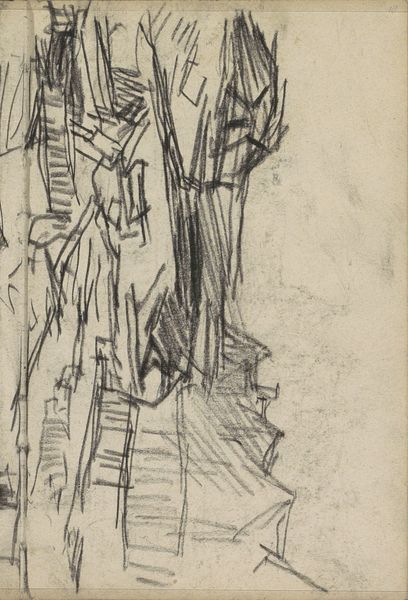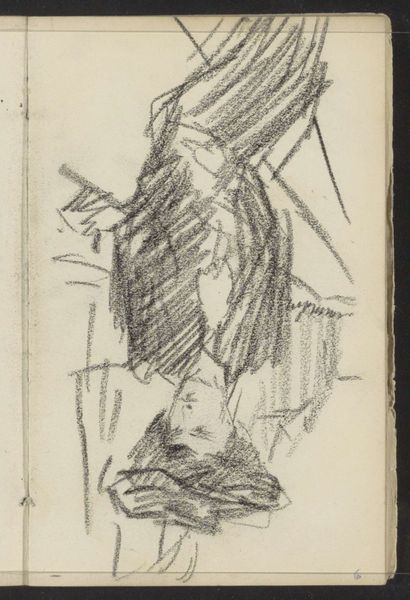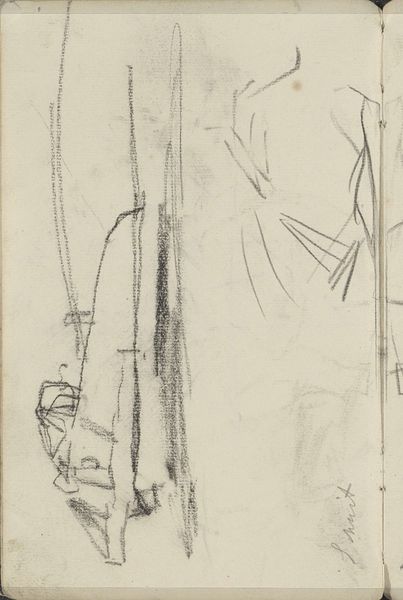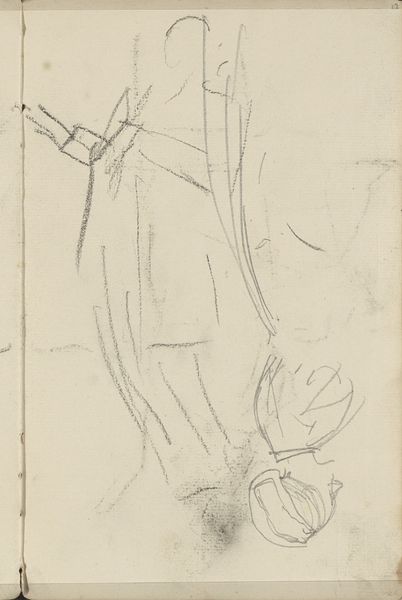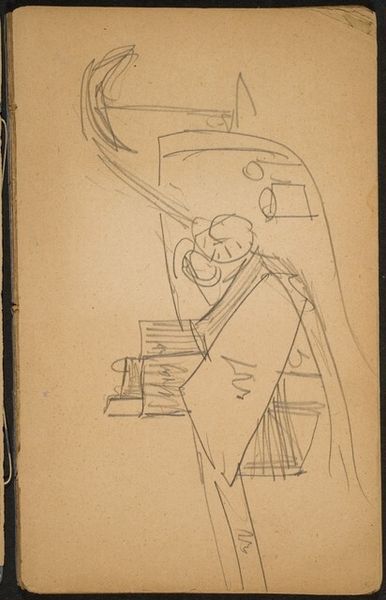![Zirkusszene (Circus Scene) [p. 3] by Max Beckmann](/_next/image?url=https%3A%2F%2Fd2w8kbdekdi1gv.cloudfront.net%2FeyJidWNrZXQiOiAiYXJ0ZXJhLWltYWdlcy1idWNrZXQiLCAia2V5IjogImFydHdvcmtzL2RmZTU1NjdmLTNmNmItNDU1NS04MzEyLTIxZTA4ZWJlYmJmYi9kZmU1NTY3Zi0zZjZiLTQ1NTUtODMxMi0yMWUwOGViZWJiZmJfZnVsbC5qcGciLCAiZWRpdHMiOiB7InJlc2l6ZSI6IHsid2lkdGgiOiAxOTIwLCAiaGVpZ2h0IjogMTkyMCwgImZpdCI6ICJpbnNpZGUifX19&w=1080&q=75)
drawing, pencil
#
drawing
#
german-expressionism
#
figuration
#
pencil
#
expressionism
Dimensions: sheet: 19.7 x 13 cm (7 3/4 x 5 1/8 in.)
Copyright: National Gallery of Art: CC0 1.0
Curator: Immediately, I sense a feeling of disquiet and unease looking at this. It's almost like a dreamscape, distorted and anxious. Editor: That's an interesting observation. We are looking at a pencil drawing titled "Zirkusszene (Circus Scene) [p. 3]" by Max Beckmann. While undated, the style certainly places it within his Expressionist period. The quick strokes suggest it’s from a sketchbook. Curator: Yes, the chaotic, raw strokes resonate with the heightened emotion typical of Expressionism. The circus imagery usually evokes fun and excitement, but here it feels off-kilter, bordering on menacing. I see that in the stark simplicity; each mark counts. Editor: For sure, that sparseness is powerful. Considering Beckmann’s position in Germany during the interwar period, how much do you see this piece mirroring his social reality as a commentary on German society? Curator: Massively! Circuses were historically communal spaces, providing fleeting escapism to the working class. So by presenting it with such an emotional intensity, almost as if filtered through trauma, the circus here might represent a collective anxiety festering beneath a veneer of superficial normalcy. Editor: That reading makes perfect sense when considering the use of pencil, a readily available medium. And this sketch would’ve been reproducible; a tangible and inexpensive product capable of reaching a wide audience during a tumultuous time. What this material choice also allows us to consider are questions about distribution networks in a fragmented and traumatized country. Curator: Absolutely, it speaks to the urgency and need for direct engagement. The pencil medium also adds to its rawness and directness, no frills. So is there a material link to an ethical directness? Editor: Potentially. But more generally the cheapness also speaks volumes; who are images *for* in such a devastated environment? And furthermore, who can *access* artistic material. In some respects the medium *becomes* the message; survival. Curator: Yes, perhaps it's a mirror reflecting a society grappling with deep, societal shifts and seeking simple human experiences through simple materials, albeit shadowed with psychological undertones. The imagery resonates, even if it does unsettle. Editor: Indeed, it reminds us of the power of a simple medium to capture, reproduce and transmit profound anxieties about one’s social conditions and experiences of devastation.
Comments
No comments
Be the first to comment and join the conversation on the ultimate creative platform.
